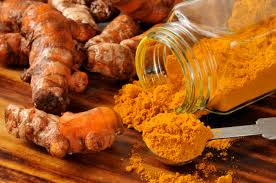This is how you pronounce Turmeric: TWO-mer-ick. And if you’re wondering what I’m talking about, here’s a picture:
To me, turmeric looks like a cross between a small piece of ginger root and a carrot. In fact, turmeric (Curcumic longa) is related to ginger. You may have noticed it showing up in recipes and food blogs more frequently and wondered why.
Well, in recent years, we have seen a surge in consumer interest and demand for this root.
The first reason is that Indian and Southeast Asian cuisines have gained popularity in recent years. Naturally, the key ingredients in those cuisines, like turmeric, ginger, lemongrass, kaffir lime leaves, and yuzu, have also become better known.
In addition, turmeric has been used in Indian ayurvedic medicine for more than 2,500 years to treat joint pain, digestive and liver problems, and skin conditions. As a matter of fact, National Geographic recently published a special guide entitled, “Nature’s Best Remedies,” and devoted an entire page to this “yellow ginger.” More and more, we Westerners are finding that Asian homeopathic treatments and remedies turn out to have scientifically confirmed health benefits. But there is currently no significant government-supervised and -approved research available on turmeric.
Did you know that turmeric is the main ingredient in curry powder and mustard powder? It’s what makes those two powdered spices yellow. Besides its purported health benefits, turmeric adds a yellow-orange color and a light earthy flavor to curries, soups, and rice. You can also steep slices of turmeric in hot water to make tea. I’ve heard of people adding the grated root to their smoothies and freshly pressed juices as well.
Personally, I’ve started buying small pieces of fresh turmeric at the store to add to my soups and veggie dishes. I have yet to try it in my morning juices, but that’s next on the list!
Hopefully, you’ll now be encouraged to try turmeric. And who knows, adding the root to your meals may actually help relieve your arthritis, muscle pain, or digestive issues. You’ll just have to let me know if it works!
Enjoy!
Karen






